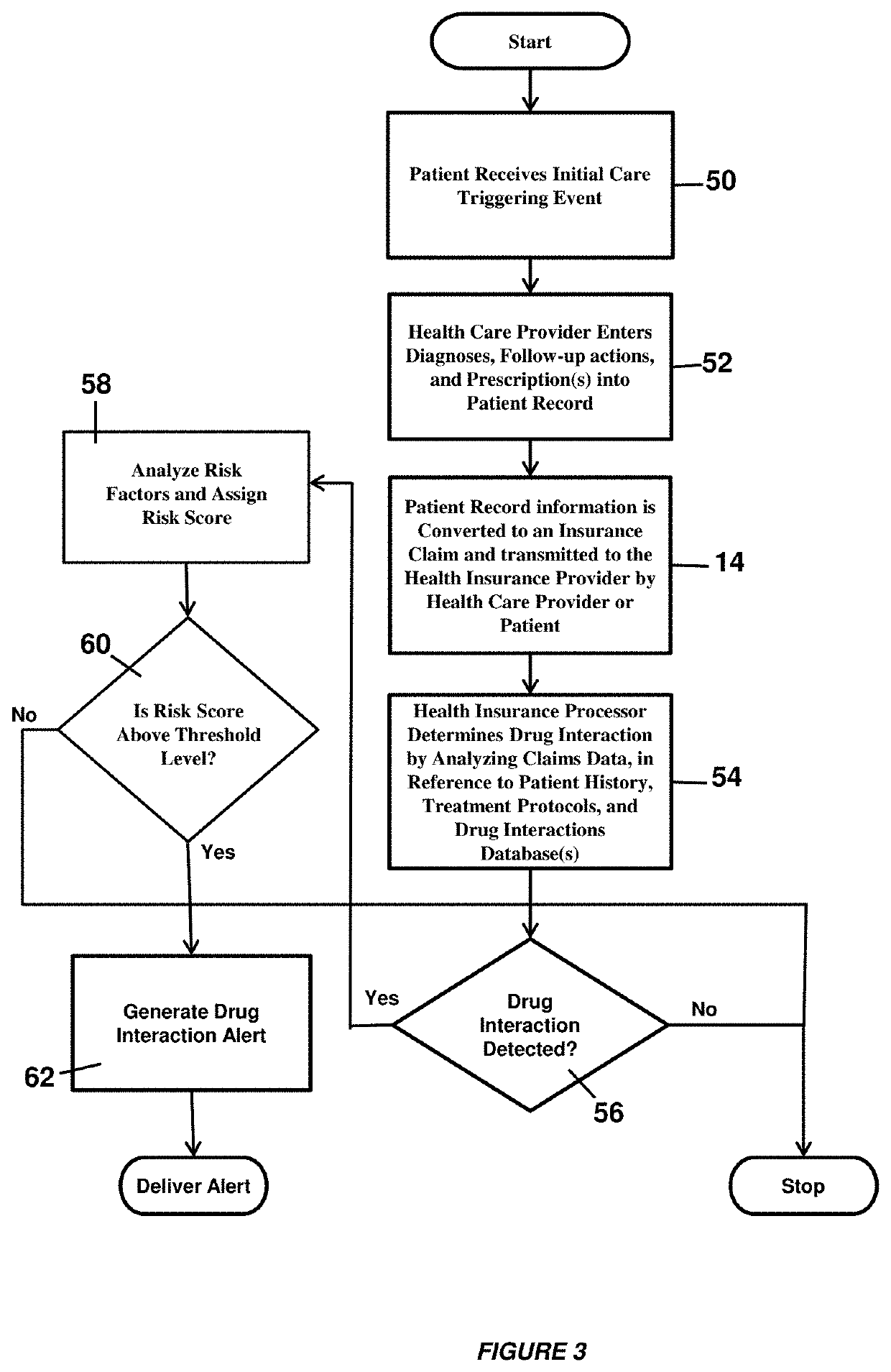Systems and methods for drug interaction alerts
a drug interaction and alert technology, applied in the field of system and method for drug interaction alerts, can solve the problems of patient health deterioration, health care costs that are much higher than the patient's, and the patient's health may be affected, so as to improve the patient's health, reduce the risk of drug interaction, and improve the effect of health care costs
- Summary
- Abstract
- Description
- Claims
- Application Information
AI Technical Summary
Benefits of technology
Problems solved by technology
Method used
Image
Examples
Embodiment Construction
[0015]The health care system comprises the interactions of three key entities; health care consumers (patients), health care providers, and health insurance providers. When a patient becomes ill, they visit their primary care physician if they have one. If not, a patient may visit an urgent care facility, emergency room, or as is becoming more common, a nurse practitioner that may have an office located in a grocery or drug store. The fact that a patient may visit any one of these health care providers creates the potential for a multiplicity of medical record locations. When one looks beyond the delivery of health care services to include the three key entities of the health care system, a common repository of patient health care exists.
[0016]When the patient visits a health care provider, they may receive a diagnosis, a recommended treatment protocol and possibly a prescription for medication. Depending on the disease or condition diagnosed, the health care provider may prescribe ...
PUM
 Login to View More
Login to View More Abstract
Description
Claims
Application Information
 Login to View More
Login to View More - R&D
- Intellectual Property
- Life Sciences
- Materials
- Tech Scout
- Unparalleled Data Quality
- Higher Quality Content
- 60% Fewer Hallucinations
Browse by: Latest US Patents, China's latest patents, Technical Efficacy Thesaurus, Application Domain, Technology Topic, Popular Technical Reports.
© 2025 PatSnap. All rights reserved.Legal|Privacy policy|Modern Slavery Act Transparency Statement|Sitemap|About US| Contact US: help@patsnap.com



